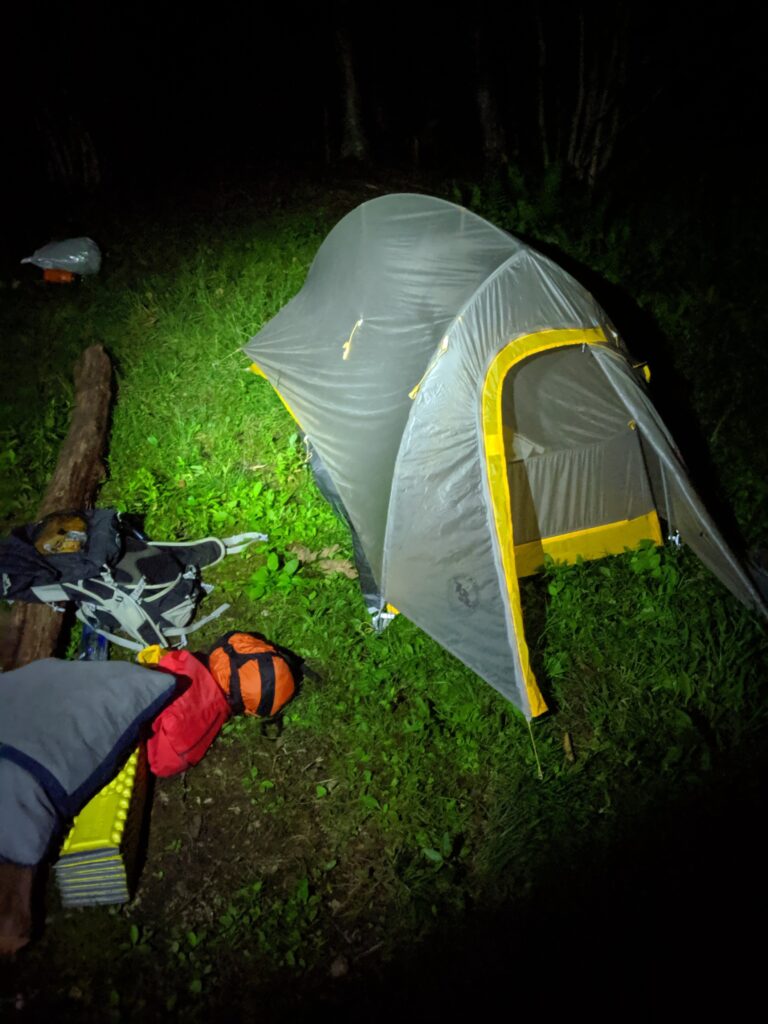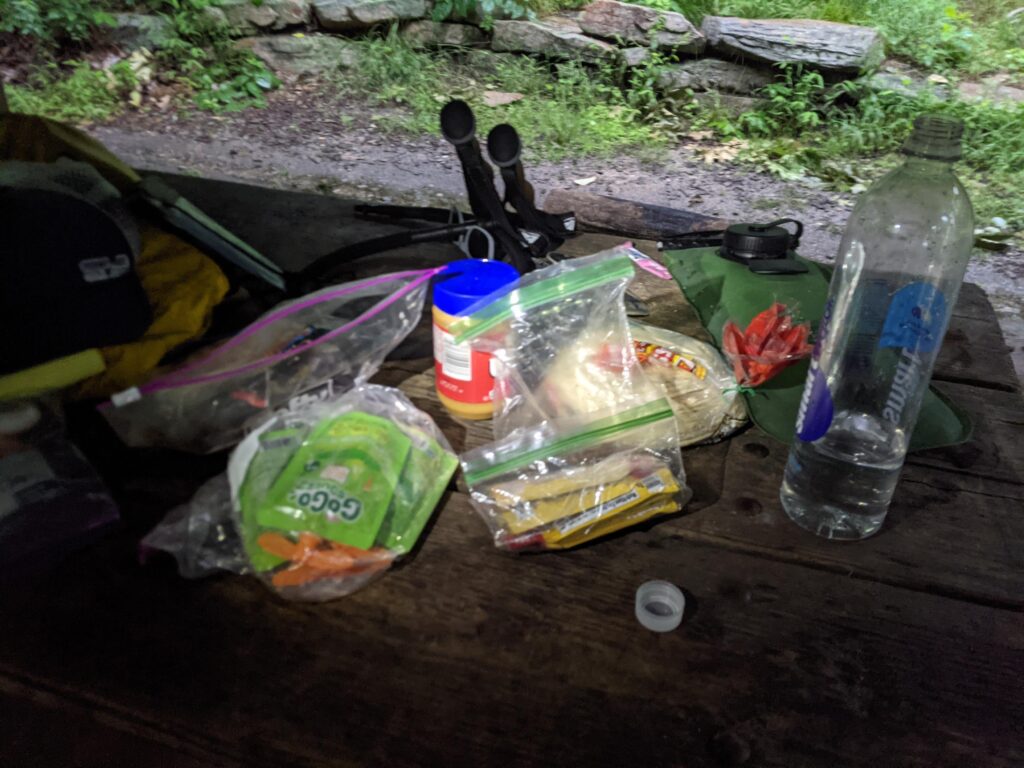Camping is a great way to spend time with friends and family, experience what the outdoors have to offer, and get away from the hustle of city life. However, there are some essentials that you need in order to be prepared for your trip. In this blog post we will discuss what camping gear you should bring on your next outing so that you can enjoy it more! These are listed in no particular order.
1. Sleeping bag
A good sleeping bag is what you need to keep warm at night while camping. Temperatures can dip below what’s comfortable, so it’s good to have a nice and cozy one with you!
There are many different types of bags out there: down or synthetic filled; mummy style shape (tight) or rectangular; single person or double/twin size. Choosing what type of bag is best for your needs will depend on how long the trip will be and what temperatures you’ll encounter in the area where you’re going–and don’t forget about weight constraints too!
Be sure to check the sleeping bags temperature rating. 40 degree sleeping bags are pretty common for warmer months. Once you start getting closer to fall though, it might be best to have a sleeping bag rated for lower temperatures.
Synthetic sleeping bags are great to start off with. As they are a little more budget friendly and can still hold heat if it gets a little wet. The tradeoff though, is that they can be heavier and bulkier than the more expensive down sleeping bags. Down filled sleeping bags are lighter weight and compress really well simply because they use down feathers to keep you warm. But the trade-offs here; is that once this particular sleeping bag gets wet, it won’t retain warmth because all the feathers stick together. These bags are also more expensive to begin with.
2. Tent
Another super important item here. Tents are great for setting up a safe haven from the elements, giving you some privacy and of course providing you a nice little cozy place to sleep.
The size of your tent is important because you want to make sure it’s big enough to accommodate all your needs and gear. If you’re going with friends or family members then a larger group sized tent will work well. But if not, an individual or two man tent can work because they pack smaller and weigh less in your backpack.

Most tents come with a rain fly to keep you dry but also check to see if it comes with a footprint. These help provide a little extra protection for the bottom of the tent and gives you another layer of protection from water or moisture.
I’ve had to purchase footprints separately for most of my tents. But definitely something to keep in mind. They come in handy.
3. Sleeping Pad
Sleeping pads are another key essential item for camping. There’s a few different kinds of sleeping pads, but overall their primary purpose is to provide comfort and insulation from the cold ground.
Two of the more popular sleeping pads are inflatable sleeping pads and closed-cell foam sleeping pads. Each has their pros and con.
The inflatable ones are easy to pack, lightweight and compact making them perfect for quick trips with light packs or long hikes with heavy loads. They provide a little more insulation than foam sleeping pads in cooler temperatures. And inflatable sleeping pads are great for side-sleepers
They do typically cost more than foam pads, and they also run the risk of getting punctured and deflating in the middle of the night. Most comes with little repair kits, but that might not be the most enjoyable thing to be doing when you should be sleeping.
The closed-cell foam pads are a lot more durable, pretty lightweight & generally pretty cheap, which makes them more accessible to most people. The downside is the comfort level isn’t as high since they can be harder and less pliable which makes it more difficult to sleep on your side. They also don’t pack as well as inflatable sleeping pads. I have to carry mine on the outside of my pack.
It all comes down to preference though. I have both and find each comes in handy. If my backpack has a lot in it, I may use my closed-cell pad on the outside of my pack. While if it’s a one-night trip and I want to sleep really well, I’ll use my inflatable pad. During winter months, I may even use both for extra insulation.
4. Pack
You’ll obviously need something to carry everything in. Most backpacks nowadays fall into external or internal framed backpacks. These frames help the backpack maintain it’s shape and help distribute the carrying load so it’s not too bad on your back and shoulders.
With external frame packs, you can actually see the frame supporting the bag. And even use it to carry more gear, like a sleeping bag, pad or tent. Whatever may work best on the outside. These packs also generally have a bunch of pockets for extra organization. External frame packs are typically more budget-friendly compared to internal framed packs.
With internal frame packs, you can’t see the frame…it’s internal. This helps improve the balance of the bag and it doesn’t take up much space. It’s more streamlined. This also helps make the packs lighter weight. A trade-off though is that they are typically more expensive than external frame bags and don’t have many pockets or organizational options.
There are frameless packs but these are used mostly by hikers and campers really looking to shave weight on their trip. The rest of their gear is typically pretty lightweight and the load-out has been refined over many years, trips or with overall experience. Without a frame, the pack will lose shape and not be able to support a heavy load as effectively as an internal or external frame, so it’s best to save those for later down the road after a few trips.
65L is a good starter size for packs. This will allow for carrying all your necessary gear, along with food and drink for a few nights camping.
5. Food
Super important here. And I could write a whole other post on this, but will keep it short and tidy here. The amount and type of food you bring really comes down to personal preference, the type of hiking/camping you’re doing and how long you’re out.
If you’re car camping or maybe you have a campsite with your car super close. You can go bring a lot more food then if you had to carry everything in your pack for a day or two while hiking. The type of food you bring also determines if you’re going to have to cook the food and/or bring extra water to boil for the food. Mountain House Meals taste great and have a lot of options to choose from, but because they’re freeze dried you will need to carry extra water to make the meal. Then boil it for best results.
I prefer to bring along dry food, or foods that I can grab at a 71 1 or convenient store. Might not be the healthiest options around, but peanut butter M&Ms are very filling and provide a lot of energy while out in the woods. Other items include peanut butter wraps, crackers, trail mix, protein bars, tuna packages, and beef jerky.

6. Water
For the water part of this, that also heavily depends on location and length of trip. If you’re at a campground, it’s likely they’ll have a good source of water. But if you’re camping off-trail or in an area without any public facilities it’s a good idea to bring what you need with you.
Or you can use a filtering system so you don’t need to carry a ton of water to start off with. I like the Sawyer. It’s a small, easy to use, lightweight filter that works well and lasts a long time with proper cleaning after use. A lot of my camping is on the Appalachian Trail so I aim to either stay at or at least stop at shelters when I need water. Most of them have good water sources nearby so I can use my filter to refill.
7. Lantern or headlamp with extra batteries
Light source for night hiking, setting up shop at night or just getting around at camp. You should definitely not leave the house without these. I carry my headlamp even if it’s just a day-hike.
You never know when you’re gonna need it. I really like the Black Diamond Spot 400 model. It’s small, lightweight, has a few different light modes and is really bright.
8. Extra clothing layers, rain gear and warm clothes for nighttime
Another section that could be it’s own blog post, clothing! I’m a firm believer that you should never go camping without some sort of extra clothing and rain gear.
My extra clothing is typically what I wear around the camp and/or sleep in. I also carry a lightweight jacket with me as well. Rain gear or at least a hiking poncho is important because you never know what the weather will be like when you’re camping.
9. Matches (in a waterproof container)
Matches are a time-tested way to start fires, but keeping them dry is also important. You may even want to carry some sort of tinder or starting aid like these fire sticks. Lighters could also work, but the same, keep them dry.
10. Personal first-aid kit
Being prepared for what could potentially go wrong is always important. This includes being ready to deal with blisters, bug bites, and what have you. This is also a good place to include alcohol pads and some antiseptic wipes if needed. Duct tape is another important item that should be mentioned here.
Duct tape has countless uses such as repairing a tent/pack/shoes/etc, reducing rub on hot spots like your heals or even labeling gear if that’s your thing.
11. Knife and/or multitool
A knife or multitool is always an essential for camping. Anything from cutting up food for a meal or using the pliers to hold onto a hot pan/lid while cooking over a fire. Even though much of my food doesn’t need much prep I feel naked when I don’t have my knife, even if I could go a weekend without using it.
